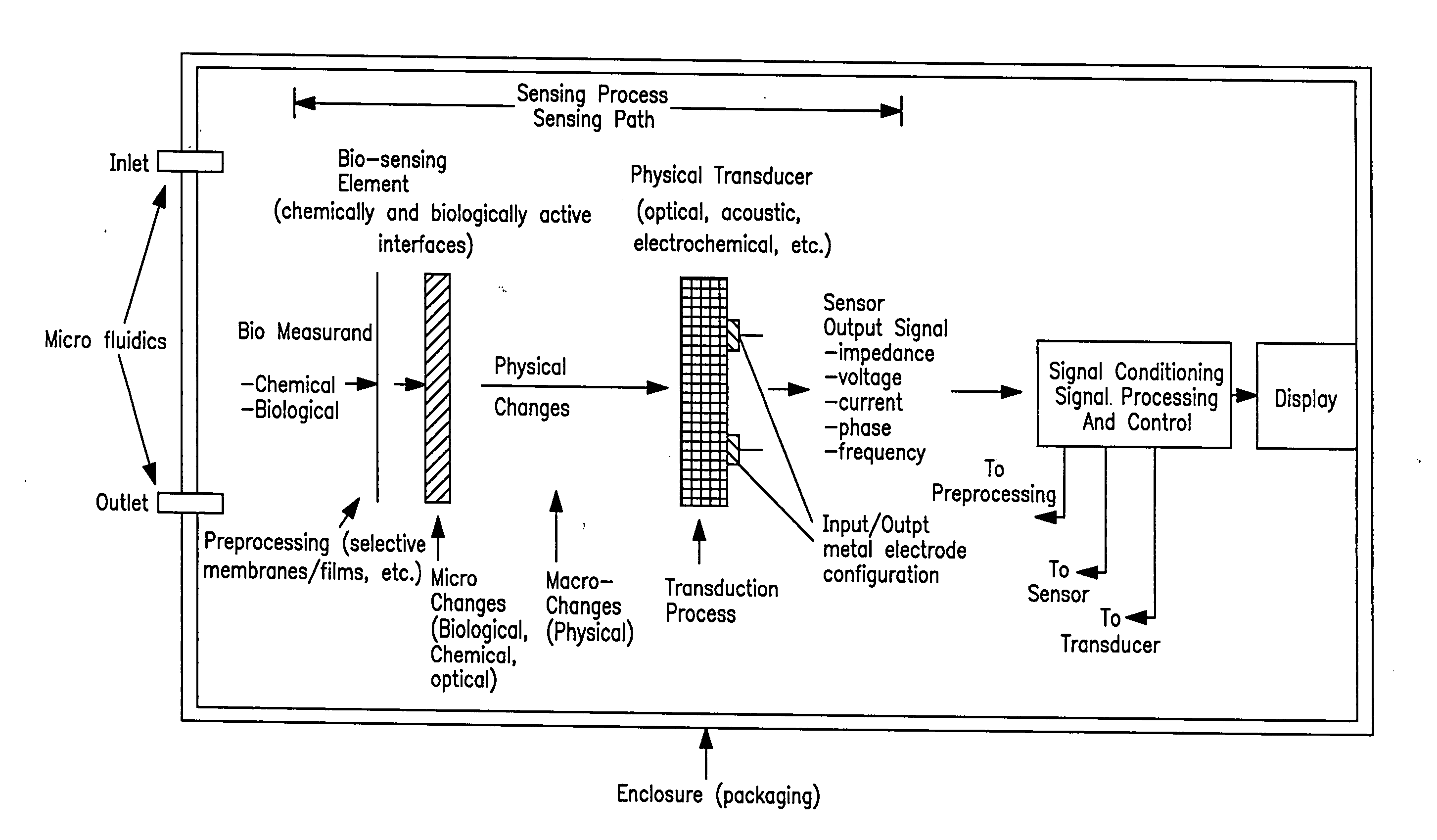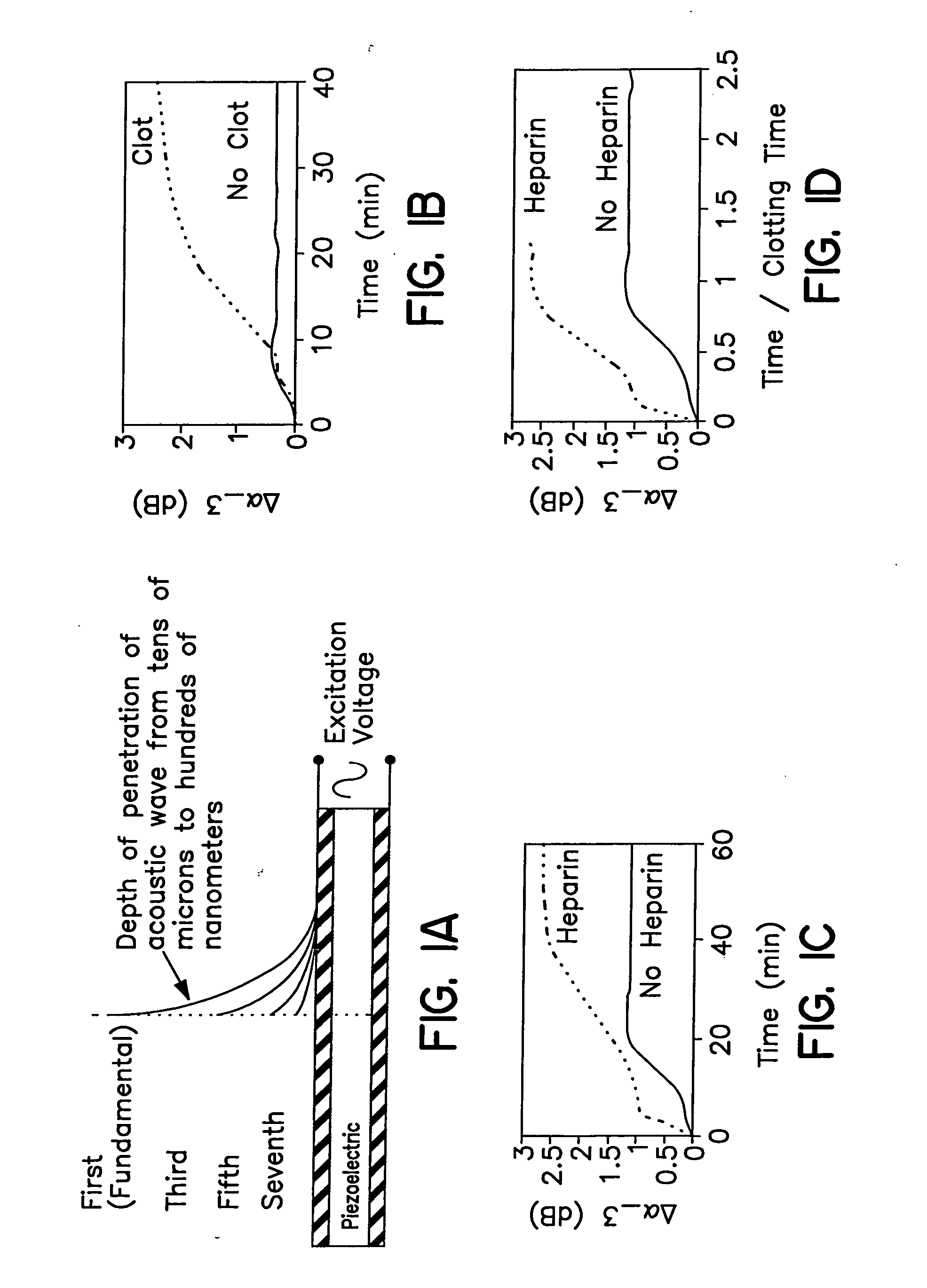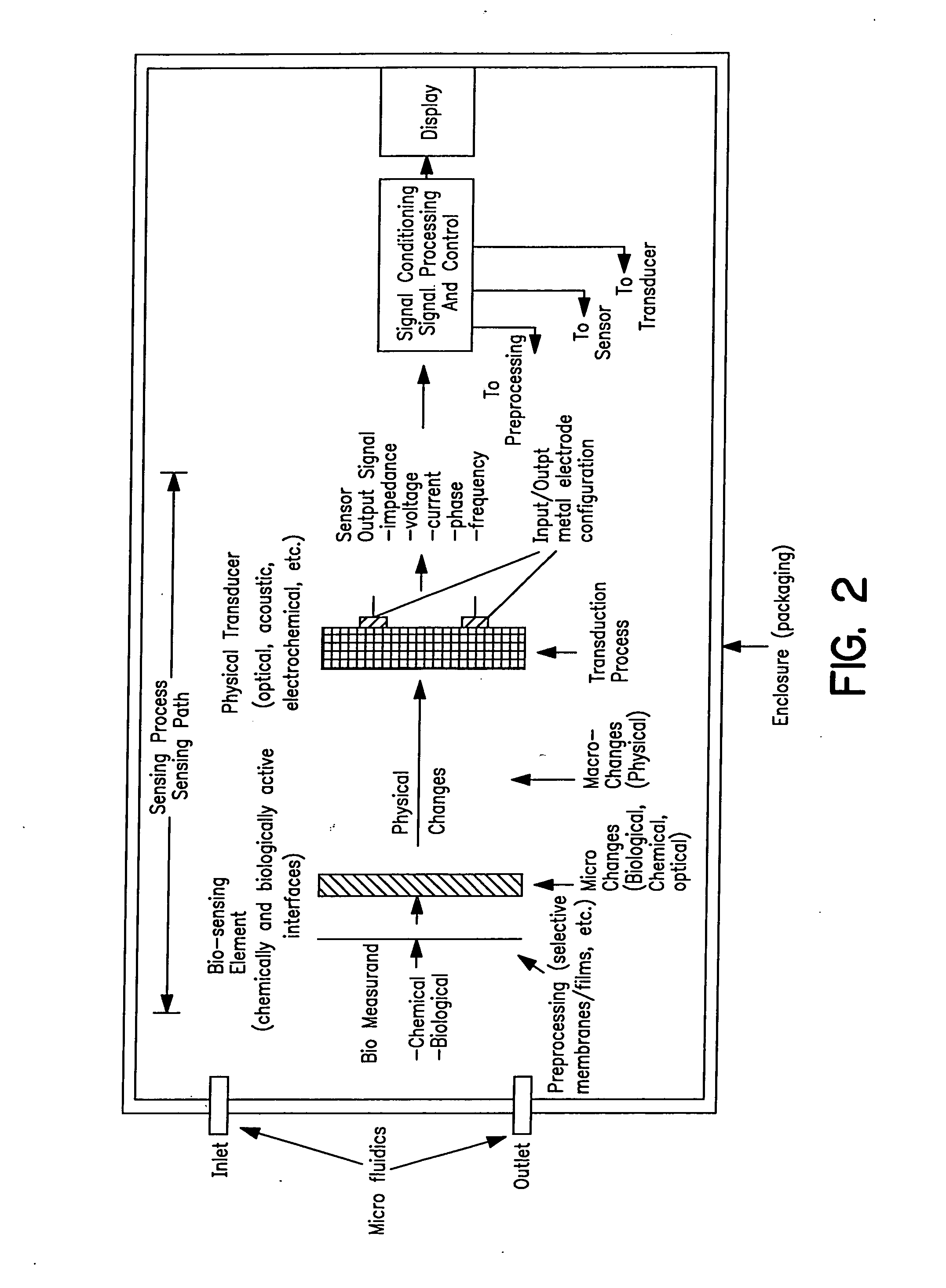Acoustic blood analyzer for assessing blood properties
a blood analyzer and acoustic technology, applied in the field of acoustic blood analyzers, can solve the problems of significant morbidity and mortality, high risk of blood clots, and relatively high risk of clotting in these operations
- Summary
- Abstract
- Description
- Claims
- Application Information
AI Technical Summary
Benefits of technology
Problems solved by technology
Method used
Image
Examples
example 2
Analysis of Blood Samples via the Acoustic Blood Analyzer
[0090] The blood acoustic analyzer was used to monitor clotting blood under a variety of conditions. Fresh porcine blood from a carotid / jugular incision was collected into 3.2% citrate (1 part to 9 parts blood) and stored at room temperature in high-density polyethylene containers. Blood was used within 8 hours in all experiments to preserve platelet function and coagulation protein concentrations. In most experiments, clotting was initiated by addition of CaCl2 solution to recalcify the blood, with rapid mixing and immediate application of 200 μL to the sensor surface using a micropipette. Ten mL of the recalcified blood was kept in a 50 mL polypropylene tube, and gently inverted periodically to monitor clotting. The clotting time was defined as the time at which the blood sample resisted inversion. In this system, clotting time was on average 10 minutes for fully recalcified blood samples. In one experiment, clotting time w...
example 3
Uncoated Sensor
[0093] Clotting blood causes an increase in sensor attenuation and a decrease in resonant frequencies which was clearly distinguishable from citrate-anticoagulated blood, which caused a negligible change in resonant frequency, and only a small rapid increase in attenuation, as shown in FIG. 1B. The dynamics of these changes correlated with mechanical clotting time as shown in FIGS. 1C and 1D, demonstrating that the sensor is suitable for detecting clotting time. The uncoated sensor also reacted rapidly and strongly with heparin in heparinized blood samples.
example 4
Collagen-coated Sensor
[0094] The sensor described in example 2 was coated with bovine achilles tendon collagen type I fibers (Sigma) by adsorption from acetic acid suspension, incubated on the sensor for 60 minutes, then rinsed with isotonic saline and allowed to air dry. The collagen coating increased sensor sensitivity to early hemostatic events associated with platelet function. These early clotting events may be mediated by platelet activation, as demonstrated by the increased rate of attenuation change when ADP is added to activate platelets. The sensor response amplitude differs between whole blood, platelet-rich plasma, and platelet-poor plasma clots. This response may be indicative of specific interactions with red blood cells, or a sensitivity to clot stiffness and viscosity.
PUM
| Property | Measurement | Unit |
|---|---|---|
| Prothrombin Time Test | aaaaa | aaaaa |
| physiological temperatures | aaaaa | aaaaa |
| penetration depth | aaaaa | aaaaa |
Abstract
Description
Claims
Application Information
 Login to View More
Login to View More - R&D
- Intellectual Property
- Life Sciences
- Materials
- Tech Scout
- Unparalleled Data Quality
- Higher Quality Content
- 60% Fewer Hallucinations
Browse by: Latest US Patents, China's latest patents, Technical Efficacy Thesaurus, Application Domain, Technology Topic, Popular Technical Reports.
© 2025 PatSnap. All rights reserved.Legal|Privacy policy|Modern Slavery Act Transparency Statement|Sitemap|About US| Contact US: help@patsnap.com



